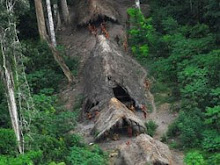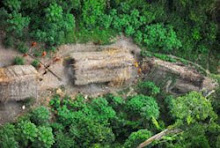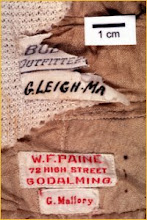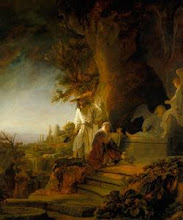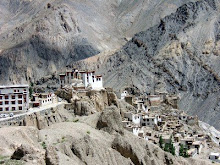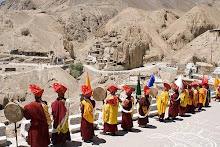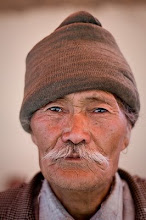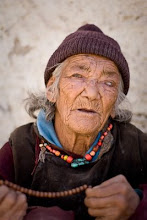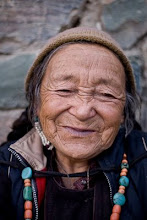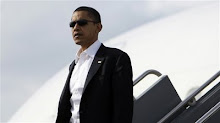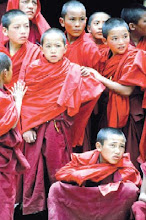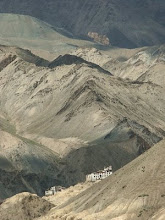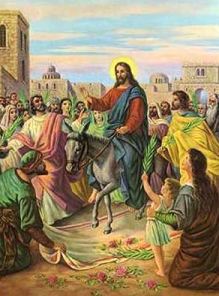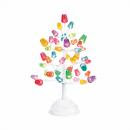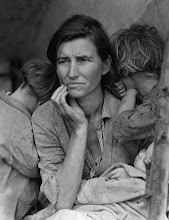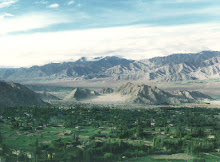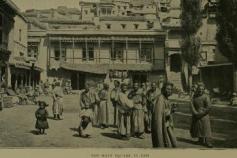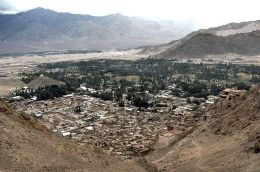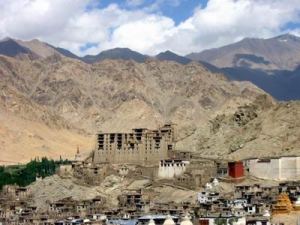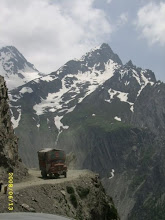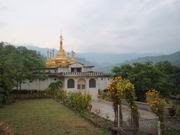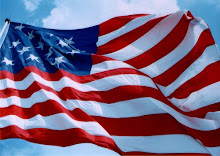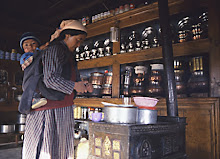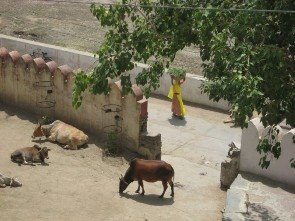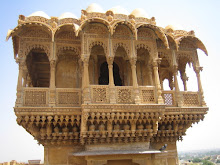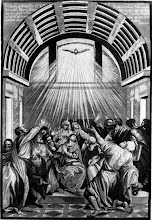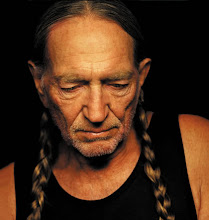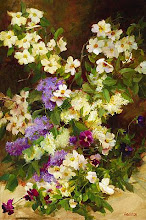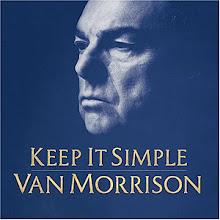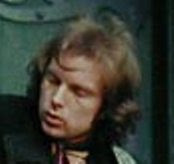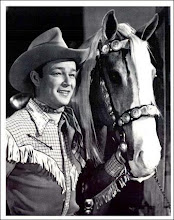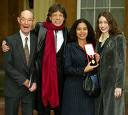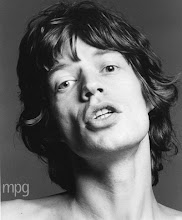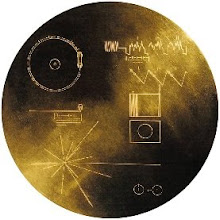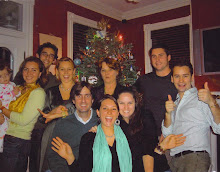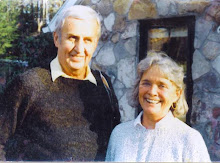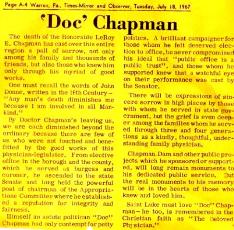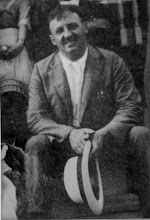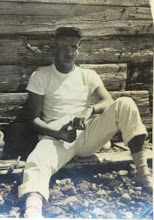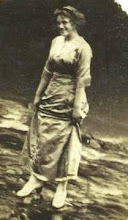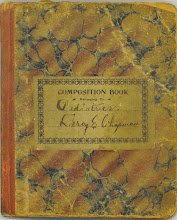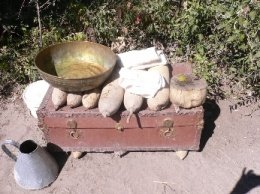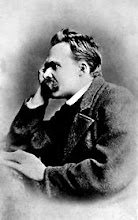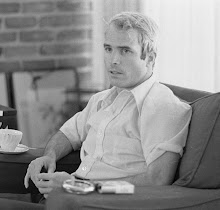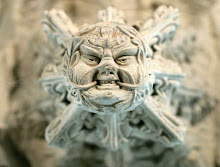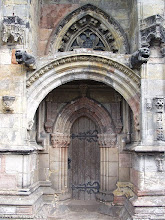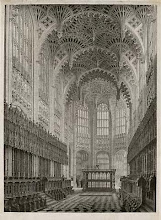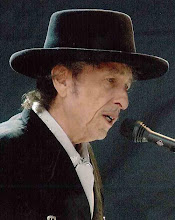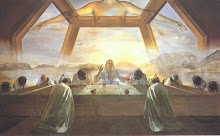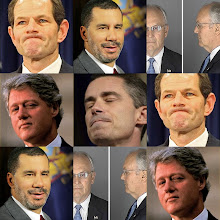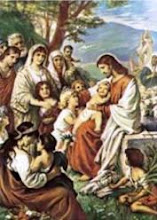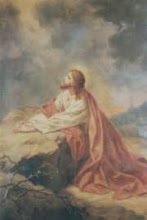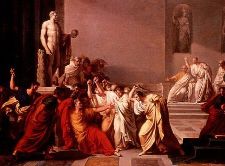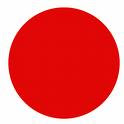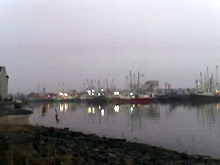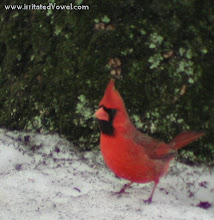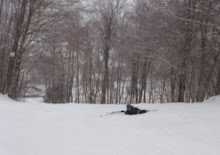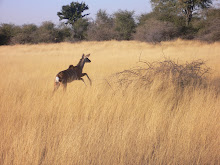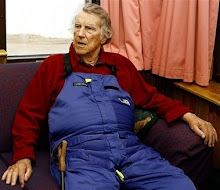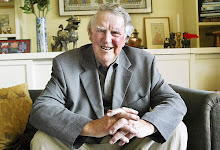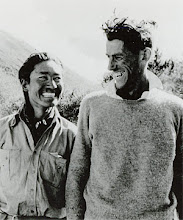Sunday, July 27, 2008
Last words from Ladakh
we are still here in Ladakh, leaving Leh tomorrow (heart aching! but grateful to the heavens!) then a few days in Delhi then back to NY so Honna can move from her apt. This has been heaven on earth. No real problems so far. JULE-AY as they say here in Ladakh. Sometimes it's spelled Jule, just like my beautiful daughter Jule- other times Juleh. or Juley. It's like aloha- means everything- hello, goodbye, goodluck....this has been wonderful!!!! Lots and lots of people our age and older still out here in the high altitudes....I didn't even take altitude medicine! Jaw situation the same- no worse... I'm much stronger than I realized, grace be to God. Love and miss you all.....
Climbing to Leh Palace! Spectacular dancing, costumes, and view.
Hi all. No way to explain the beauty and excitement. Can you believe I walked up to the Leh Palace, nearly sliding down the hill a few times. I was so out of breath and kept saying I couldn’t do it but Honna kept encouraging me onward. I noticed an old monk at the very top watching our ascent for awhile. At the end we decided to diverge from the established path and take a shortcut straight up the last stretch with no rocks for steps, nothing to hold onto, just dirt, and I just couldn’t make it. Suddenly two young heavenly sherpas came to my rescue and helped me up, such strong arms I’ve never felt, except when a Tibetan women helped me climb up some steps in Dumkhar., and now I’ve noticed Honna has Tibtan arms too. The forearm bones, when I have relied upon them, have been like rods of steel! I was panting for breath, thought I would die for sure, but with heavenly wings- those arms holding me up, we made it to the top and at the ancient Leh Palace saw close-up all the traditional Ladakhi-Tibetan dances and costumes I have always loved and never dreamed I’d see. The view from the palace is so breath-taking - no picture could ever do it justice, it’s really near as can be (for most people) to the top of the world. I can’t explain the thrill of it. I said from the beginning of the trip that I would never be able to walk that far, but thanks to Honna and the other Ladakhi arms, I did! I highly recommend the book "Jesus Lived in India." Of course he did. All you need to do is come here to Ladakh and the monasteries to understand it all.And even to understand that His teachings are embued with Buddhism.Beyond belief, beyond amazing, beyond my wildest dreams.
Labels:
Jesus in Ladakh,
Ladakhi dancing,
Leh Palace dancing
Friday, July 25, 2008
Travels on the Leh-Srinigar Road and Beyond
Cannot believe the wonderful trip we tool with Mr. Tashi from LEHO...the vehicle was small and the LEHO people, Dr. Mohammed Deen and Razia Sultana were so helpful in making the arrangements, which involved helping to transport LEHO-connected people from one town to another. They were all concerned if we would be uncomfortable. "Oh no it'll be fine" I said, little knowing what a full spectrum of comfort levels there are in this world, and in particular along the Leh-Kargil road.....so arduous but so incredible. The engineering feat of creating this wonderful road, with its stone walls, so much of it in excellent shape, is an endeavor most Americans couldn't imagine....the workers live in tents along the way, working for months at a time before taking breaks to go home to their villages.
Everywhere we went the hospitality was so generous, kind, gentle. My photos, if I ever get rested enough to upload them, will confirm the utter beauty of the homes and the hard work the people do with ease and love. We slept in a tent on the top of a Ladakhi roof in the village of Dumkbar. If we would have done any sleepwalking outside the tent we would have fallen off a ledge into oblivion. I usually go to the bathroom several times a night but this was definitely not an option...the toilet would have required a trip down stairs through the home where people were sleeping, and then outside along a narrow path through a garden.I t was what they call a dry toilet which is a hole in the ground. The toilet was not the problem, just the location of it, one misstep in the nighttime could have ended in disaster. At the home we were staying it was very clean, everything was clean and beautiful, shrines and holiness throughout.
The ride was so harrowing and backbreaking I can't believe the fascinating things that happened along the way and the people we met and all that we learned. I would do it all again tomorrow if I had a chance.
Unfortunately Honna's camera memory card of the trip got scratched and so much of it all is lost we think. It's a true heartbreak. But we have to accept it and move on. We still have enough to design the brochure that LEHO needs, since they acknowledge forthrightly their weakness is in written English documentation of their work. They do have a logo but I think it needs help. They appoint the head of their greenhouse projects in each village and then provide materials and training for start-up, but then back off, and let the villagers run it themselves, dropping in now and then to offer help without insulting the pride of the villagers. Everyone profits, and everyone must pay some money into their business, machine repairs etc. We also visited a self-starting children's school that runs for an hour each night, at 7:30 after work is done, just to learn one English word a day. I will look for flash cards with pictures on the baclk to send them. Also it amazes me that they apparently don't grow or know about kale, which loves the winter. so I'm going to send some seeds.... The winters are so hard and these LEHO projects are designed in conjunction with 4 other NGOS to help improve the villagers life.
We just happened to be present at Lamayuru monastery when a new Rimpoche arrived for a visit in a caravan of modern white jeeps.We saw them weaving back and forth across the mountains from a long way off. All the monks played their ancient instruments and wore the ancient ceremionial garb for the arrival, the most ancient Ladakhis and Tibetan refugees in traditional garb spun prayer wheels and sat along the road, waiting for him. I don't know how they have the strength to walk so far and up such hills. We also visited Alchi monastery, absolutely impossible to describe the ancient beauties, efforts, and mysteries there. These monasteries have as much and maybe more spiritual oomph than anywhere I've ever been. When you consider how remote they are, how difficult they are to reach even in 2008, you really do have to wonder how they could build gilded statues of Buddhas encrusted with semi-precious stones two stories high- a thousand years ago!
But most importantly perhaps, we saw the LEHO (NGO) works in progress, microhydroelectric power in action for grinding almonds, extracting the oil, and grinding barley. The community all benefits from each product through a cooperative unit, with the European Union at the top of the pyramid of engineers and donors. No USA support of LEHO to speak of yet, but we will research that and set up a fund for interested donors. Swedish and French very large donors of equipment including weaving looms, spinning and wool carding machines. I bought one shawl that will supposedly support a village for a long time, and empower women to have their own money. Many of the projects are arranged so that the women don't have to ask their husbands for money for household expenses, which is considered to be humiliating.
We were entertained in every household we visited- every greenhouse, every root cellar, every poultry farm, every apricot drying scheme, every garden, by kind gracious, gentle, laughing, happy people, offering us butter tea and regular tea and biscuits and very crunchy almond barley mix...We rode much of the journey with traditionally dressed Ladakhi women, sleeping on one another's shoulders etc as we bumped along.
I hadn't realized the importance of the slight change in altitude and keeping hydrated for the return to Leh, which is higher altitude. Last night I had my first episode of true frightening death-defying pain, getting an hourlong headache in which I thought my brain was exploding. Never in my life experienced such pain, it was beyond belief. Honna did her kind care and pranic healing, and just her kind hand on my brow and to be able to hold onto her arm was such a comfort. I couldn't get out of bed for another twelve hours as it subsided. I thought it was cerebral edema (for which I had brought an emergency supply of predisone but didn't use) but Honna softly and gently said not to worry, it was just lack of proper hydration on our journey. The Ladakhi women don't drink water on their journeys so I was trying to be one of them and not be so American with my water bottle, but I am what I am, and the water is so critical at altitude..you have to drink it all day long from safe water bottles, everyone does, plastic which can be refilled at certain places, but plastic in general is frowned upon in this most ecologically aware part of the world...they put America to shame here in Ladakh, because their ecological schemes are so advanced and so gentle...
On the way back we were nearly out of gas and it was very dark on very windy roads along cliffs. We saw ancient remote statues - gilded and bejewelled- of various deities in the temples along the way. Even though it's only a few hundred kilometers to Dumkbar along the Srinigar-Leh road, it took about eight hours with all our stops along the way. It was a hard and exhausting journey but when we arrived, and sat on a dirt floor by candlelight with the beautiful men and women, looking at their cooperative efforts in handicraft, and drinking butter tea sitting by the looms and woolens and grains, helping to box them up to take to market the next day, it was an ineffably beautiful end to the day. In the car the next day the ever-jolly Ladakhi women took turns grabbing my thigh and shaking it and saying how strong I was and how young I look! I have a hard time accepting compliments, but it is amazing and shocking to get compliments from the people I admire most in the world for their strength and beauty. However life in the mountain villages is hard, and people whose age I estimate as 60 or 70 are actually only in their forties and fifties, but still beautiful beyond words....
I am beyond happy, beyond blessed,beyond wonder, so full of gratitude for this experience....Love to all...Please become aware of Ladakh. Honna and I will be trying to raise awareness in the USA when we return. As I've said, we are responsible now for making a brochure and other literature as part of our arrangement with the NGO LEHO to go to the outer villages and homes.ALthough Leh is a wonderful bustling tourist destination with its share of hustlers and vendors just like any other tourist town, Ladakh is an unspoiled, almost unspoilable region of the world. I haven't been able to upload photos, the time is too long, but no picture could ever capture the pure goodness and beauty of Ladakh.
Everywhere we went the hospitality was so generous, kind, gentle. My photos, if I ever get rested enough to upload them, will confirm the utter beauty of the homes and the hard work the people do with ease and love. We slept in a tent on the top of a Ladakhi roof in the village of Dumkbar. If we would have done any sleepwalking outside the tent we would have fallen off a ledge into oblivion. I usually go to the bathroom several times a night but this was definitely not an option...the toilet would have required a trip down stairs through the home where people were sleeping, and then outside along a narrow path through a garden.I t was what they call a dry toilet which is a hole in the ground. The toilet was not the problem, just the location of it, one misstep in the nighttime could have ended in disaster. At the home we were staying it was very clean, everything was clean and beautiful, shrines and holiness throughout.
The ride was so harrowing and backbreaking I can't believe the fascinating things that happened along the way and the people we met and all that we learned. I would do it all again tomorrow if I had a chance.
Unfortunately Honna's camera memory card of the trip got scratched and so much of it all is lost we think. It's a true heartbreak. But we have to accept it and move on. We still have enough to design the brochure that LEHO needs, since they acknowledge forthrightly their weakness is in written English documentation of their work. They do have a logo but I think it needs help. They appoint the head of their greenhouse projects in each village and then provide materials and training for start-up, but then back off, and let the villagers run it themselves, dropping in now and then to offer help without insulting the pride of the villagers. Everyone profits, and everyone must pay some money into their business, machine repairs etc. We also visited a self-starting children's school that runs for an hour each night, at 7:30 after work is done, just to learn one English word a day. I will look for flash cards with pictures on the baclk to send them. Also it amazes me that they apparently don't grow or know about kale, which loves the winter. so I'm going to send some seeds.... The winters are so hard and these LEHO projects are designed in conjunction with 4 other NGOS to help improve the villagers life.
We just happened to be present at Lamayuru monastery when a new Rimpoche arrived for a visit in a caravan of modern white jeeps.We saw them weaving back and forth across the mountains from a long way off. All the monks played their ancient instruments and wore the ancient ceremionial garb for the arrival, the most ancient Ladakhis and Tibetan refugees in traditional garb spun prayer wheels and sat along the road, waiting for him. I don't know how they have the strength to walk so far and up such hills. We also visited Alchi monastery, absolutely impossible to describe the ancient beauties, efforts, and mysteries there. These monasteries have as much and maybe more spiritual oomph than anywhere I've ever been. When you consider how remote they are, how difficult they are to reach even in 2008, you really do have to wonder how they could build gilded statues of Buddhas encrusted with semi-precious stones two stories high- a thousand years ago!
But most importantly perhaps, we saw the LEHO (NGO) works in progress, microhydroelectric power in action for grinding almonds, extracting the oil, and grinding barley. The community all benefits from each product through a cooperative unit, with the European Union at the top of the pyramid of engineers and donors. No USA support of LEHO to speak of yet, but we will research that and set up a fund for interested donors. Swedish and French very large donors of equipment including weaving looms, spinning and wool carding machines. I bought one shawl that will supposedly support a village for a long time, and empower women to have their own money. Many of the projects are arranged so that the women don't have to ask their husbands for money for household expenses, which is considered to be humiliating.
We were entertained in every household we visited- every greenhouse, every root cellar, every poultry farm, every apricot drying scheme, every garden, by kind gracious, gentle, laughing, happy people, offering us butter tea and regular tea and biscuits and very crunchy almond barley mix...We rode much of the journey with traditionally dressed Ladakhi women, sleeping on one another's shoulders etc as we bumped along.
I hadn't realized the importance of the slight change in altitude and keeping hydrated for the return to Leh, which is higher altitude. Last night I had my first episode of true frightening death-defying pain, getting an hourlong headache in which I thought my brain was exploding. Never in my life experienced such pain, it was beyond belief. Honna did her kind care and pranic healing, and just her kind hand on my brow and to be able to hold onto her arm was such a comfort. I couldn't get out of bed for another twelve hours as it subsided. I thought it was cerebral edema (for which I had brought an emergency supply of predisone but didn't use) but Honna softly and gently said not to worry, it was just lack of proper hydration on our journey. The Ladakhi women don't drink water on their journeys so I was trying to be one of them and not be so American with my water bottle, but I am what I am, and the water is so critical at altitude..you have to drink it all day long from safe water bottles, everyone does, plastic which can be refilled at certain places, but plastic in general is frowned upon in this most ecologically aware part of the world...they put America to shame here in Ladakh, because their ecological schemes are so advanced and so gentle...
On the way back we were nearly out of gas and it was very dark on very windy roads along cliffs. We saw ancient remote statues - gilded and bejewelled- of various deities in the temples along the way. Even though it's only a few hundred kilometers to Dumkbar along the Srinigar-Leh road, it took about eight hours with all our stops along the way. It was a hard and exhausting journey but when we arrived, and sat on a dirt floor by candlelight with the beautiful men and women, looking at their cooperative efforts in handicraft, and drinking butter tea sitting by the looms and woolens and grains, helping to box them up to take to market the next day, it was an ineffably beautiful end to the day. In the car the next day the ever-jolly Ladakhi women took turns grabbing my thigh and shaking it and saying how strong I was and how young I look! I have a hard time accepting compliments, but it is amazing and shocking to get compliments from the people I admire most in the world for their strength and beauty. However life in the mountain villages is hard, and people whose age I estimate as 60 or 70 are actually only in their forties and fifties, but still beautiful beyond words....
I am beyond happy, beyond blessed,beyond wonder, so full of gratitude for this experience....Love to all...Please become aware of Ladakh. Honna and I will be trying to raise awareness in the USA when we return. As I've said, we are responsible now for making a brochure and other literature as part of our arrangement with the NGO LEHO to go to the outer villages and homes.ALthough Leh is a wonderful bustling tourist destination with its share of hustlers and vendors just like any other tourist town, Ladakh is an unspoiled, almost unspoilable region of the world. I haven't been able to upload photos, the time is too long, but no picture could ever capture the pure goodness and beauty of Ladakh.
Saturday, July 19, 2008
Greetings from Ladakh - Heaven on Earth!
We are here and the air is wonderful. I think I was born for high altitudes! There's no way to describe in the minute I have how wonderful everything is. Honna and I found a wonderful organization, LEHO, which has accepted our offer of help to make a brochure in English. We will be visiting the outer villages to see the efforts to help provide the people with greenhouses to grow vegetables in winter, also to empower the women to make an income through handicrafts. The Hotel Dragon is the most wonderful hotel in the world.
The people we have met are so kind, so smart, so energetic, so self-sufficient, so gentle, so beautiful. I want to come back every year! And Honna and I want to do everything we can to help the organizations by raising awareness (and funding) in the USA. I can't begin to express how wonderful it is. No problems whatsoever. They are welcoming tourists, everyone should come to see the mountains, the poplars, to breathe the beautiful air, to see the beautiful architecture and the beautiful faces. We can all learn so much from these people. They are so far ahead of us in so many ways!
In the coming days we will take one daytrip and an overnight trip to the outlying villages to see the means of livelihood and support through the cold winters. A man from Leho NGO offered to go with us to translate as we ask questions, so we can help with the publications when we get back to the States. We will also visit some of the monasteries. Now we're off to buy notebooks for the journeys. No words could express how blissfully happy I am or how wonderful it is to be doing this with Honna, or how beautiful it is here at the top of the world!
The people we have met are so kind, so smart, so energetic, so self-sufficient, so gentle, so beautiful. I want to come back every year! And Honna and I want to do everything we can to help the organizations by raising awareness (and funding) in the USA. I can't begin to express how wonderful it is. No problems whatsoever. They are welcoming tourists, everyone should come to see the mountains, the poplars, to breathe the beautiful air, to see the beautiful architecture and the beautiful faces. We can all learn so much from these people. They are so far ahead of us in so many ways!
In the coming days we will take one daytrip and an overnight trip to the outlying villages to see the means of livelihood and support through the cold winters. A man from Leho NGO offered to go with us to translate as we ask questions, so we can help with the publications when we get back to the States. We will also visit some of the monasteries. Now we're off to buy notebooks for the journeys. No words could express how blissfully happy I am or how wonderful it is to be doing this with Honna, or how beautiful it is here at the top of the world!
Tuesday, July 15, 2008
Dimes and Butterscotch: Little Things to Take Along To The Himalaya
I've already loaded my bag into the car and have come back in for some last minute things.
Thinking of the appreciative people in the world, and in particular of children and nice old folks I'll see along the way, I already packed a few handfuls of delicious and beautiful gold foil-wrapped butterscotches from Gardiners, Scotland. I packed a seashell with a hole already in place for a string,for someone special I have yet to meet.
And just as I was putting the bag into the car, and wondering if I would have the opportunity to spread any goodwill for the USA, I thought: dimes. Remote people probably don't see a whole lot of dimes, dollar bills being the more readily recognized currency worldwide. But dimes are so beautiful, so meaningful, so light and easy to carry!
My grandmother used to pay a boy a dime an hour to move her woodpile every year. And that was in the 1970's, not really so very long ago. He was glad for that dime. Dimes are things of beauty. I do miss the days when the Liberty dime's composition was such that if a thermometer broke, you could get the mercury to stick to it- a wondrous sight! .. still today there's FDR, there's liberty, there's e pluribus unum, the mighty oak that grows from an acorn, an eternal flame, there's an olive branch, there's the United States of America, there's God. A dime is a beautiful thing. I'm taking a handful and will do my part to spread them thoughtfully into the hands of thoughtful people, and I'll sprinkle a few in the Ganges too.
Thinking of the appreciative people in the world, and in particular of children and nice old folks I'll see along the way, I already packed a few handfuls of delicious and beautiful gold foil-wrapped butterscotches from Gardiners, Scotland. I packed a seashell with a hole already in place for a string,for someone special I have yet to meet.
And just as I was putting the bag into the car, and wondering if I would have the opportunity to spread any goodwill for the USA, I thought: dimes. Remote people probably don't see a whole lot of dimes, dollar bills being the more readily recognized currency worldwide. But dimes are so beautiful, so meaningful, so light and easy to carry!
My grandmother used to pay a boy a dime an hour to move her woodpile every year. And that was in the 1970's, not really so very long ago. He was glad for that dime. Dimes are things of beauty. I do miss the days when the Liberty dime's composition was such that if a thermometer broke, you could get the mercury to stick to it- a wondrous sight! .. still today there's FDR, there's liberty, there's e pluribus unum, the mighty oak that grows from an acorn, an eternal flame, there's an olive branch, there's the United States of America, there's God. A dime is a beautiful thing. I'm taking a handful and will do my part to spread them thoughtfully into the hands of thoughtful people, and I'll sprinkle a few in the Ganges too.
Monday, July 14, 2008
Voyage
My mind's been running from the ridiculous to the sublime and back again all day long, Here's a sample....I'm in the mood for a little poetry as I prepare to set virtual sail. A little dab'll do ya'. (That's from an old Brylcreem ad)
From Tennyson's Ulysses:
Though much is taken, much abides; and though
We are not now that strength which in old days
Moved earth and heaven; that which we are, we are;
One equal temper of heroic hearts,
Made weak by time and fate, but strong in will
To strive, to seek, to find, and not to yield.
~~~~~~~~~~~~~~~~~~~~~~~~~~~~~~~~~~~~~~~~~~~~~~~
And speaking of Brylcreem:
Thanks to Dreamer2TV
I wonder if they have the old Burma Shave signs anywhere anymore? I'll have to do a little research on those when I get back. Toodle-oo. Blah blah blah....
From Tennyson's Ulysses:
Though much is taken, much abides; and though
We are not now that strength which in old days
Moved earth and heaven; that which we are, we are;
One equal temper of heroic hearts,
Made weak by time and fate, but strong in will
To strive, to seek, to find, and not to yield.
~~~~~~~~~~~~~~~~~~~~~~~~~~~~~~~~~~~~~~~~~~~~~~~
And speaking of Brylcreem:
Thanks to Dreamer2TV
I wonder if they have the old Burma Shave signs anywhere anymore? I'll have to do a little research on those when I get back. Toodle-oo. Blah blah blah....
Labels:
old Brylcreem ads,
setting sail,
Tennyson,
Ulysses
Sunday, July 13, 2008
Passage to India: Will this trip have been worth it?
Everyone asks me if I'm excited to go to India. India is huge so I'm not sure what they are picturing when they ask me that, but I have a pretty good idea. The wretched refuse of the teeming shores, sweltering heat, and all that. But I'm not going to that India, I'm going to sparsely populated, cool Ladakh, and am I excited? Well at the moment, no, excited isn't the word. Scared to death is more like it. Scared of dying. Filled with doubt! One of my friends is strong enough to go out on a limb and say forcefully "You're not going to die on this trip!" I love when someone goes all out like that, and I take it to heart appreciatively, and get strength from it. But, really, who knows?
My children are very supportive. Someone said recently that my family uses India like summer camp, but that's an exaggeration. My original family, that is, mother father and sister, never did share my fascination for the far-flung teeming shores. Why wouldn't I want to spend a few weeks in Paris? Or a quiet time at home? Fair enough. I'd like both of those things too. I take their words to heart, and it adds to my anxiety. Why am I so different from my own flesh and blood?
Well this trip is inexpensive and thrilling. Imagine flying in a puddle-jumper through the high passes of the Himalaya! Imagine being at the furthest reaches of mankind, and seeing ancient artistic, intellectual and spiritual endeavors preserved in remote monasteries. How could people living a life so isolated and difficult have produced art and documents and philosophies and medicines and means of survival so intricately beautiful that we can't begin to imagine, in our present world, the patience and presence of mind such people had, and some still have? I'll be looking for vestiges of the past, and of pure unadulterated cultural survival.
I don't have that special skill-set for survival, whatever it is or was. Even sitting here with all that electricity and the local grocery store, drugstore, and art-supply store provide, I can't lose five pounds or get my bag packed or make a checklist of what I still need to do, let alone subsist through winter and build a gilded statue of Buddha larger than life size. Could I devise a theology, a cosmology, could I weave a cloth, forge a bracelet or brew a beer? Not a chance. Not without the internet!
So I'm scared. Have I painted myself into a corner? Is this really what I want? In the long run, would the money have been better spent on a face-lift, a new roof for my house, or a great dog? In the lonely aging years of recollecting to come, if there are any, I think the venture off into the unknown will be for the better. But only time will tell.
My children are very supportive. Someone said recently that my family uses India like summer camp, but that's an exaggeration. My original family, that is, mother father and sister, never did share my fascination for the far-flung teeming shores. Why wouldn't I want to spend a few weeks in Paris? Or a quiet time at home? Fair enough. I'd like both of those things too. I take their words to heart, and it adds to my anxiety. Why am I so different from my own flesh and blood?
Well this trip is inexpensive and thrilling. Imagine flying in a puddle-jumper through the high passes of the Himalaya! Imagine being at the furthest reaches of mankind, and seeing ancient artistic, intellectual and spiritual endeavors preserved in remote monasteries. How could people living a life so isolated and difficult have produced art and documents and philosophies and medicines and means of survival so intricately beautiful that we can't begin to imagine, in our present world, the patience and presence of mind such people had, and some still have? I'll be looking for vestiges of the past, and of pure unadulterated cultural survival.
I don't have that special skill-set for survival, whatever it is or was. Even sitting here with all that electricity and the local grocery store, drugstore, and art-supply store provide, I can't lose five pounds or get my bag packed or make a checklist of what I still need to do, let alone subsist through winter and build a gilded statue of Buddha larger than life size. Could I devise a theology, a cosmology, could I weave a cloth, forge a bracelet or brew a beer? Not a chance. Not without the internet!
So I'm scared. Have I painted myself into a corner? Is this really what I want? In the long run, would the money have been better spent on a face-lift, a new roof for my house, or a great dog? In the lonely aging years of recollecting to come, if there are any, I think the venture off into the unknown will be for the better. But only time will tell.
Saturday, July 12, 2008
From National Geographic Traveller: Leh Ladakh, a capital along the Ancient Silk Road
"Affectionately dubbed "Little Tibet" because of its geographical and cultural proximity to Tibet (it also is host to many Tibetan refugees), Buddhist-flavored, politically semi-autonomous Ladakh is India's most remote and least populated region. A land of soaring snow-topped peaks and plunging green valleys, this austerely beautiful region is like nowhere else in India. The stark mountain landscape, with its rocky ridges, dry plains, and glassy lakes, is peppered with colorful gompas (Buddhist monasteries), palaces, villages, and seasonal orchards."
The capital of Ladakh, traveler-friendly Leh is picturesquely enveloped by the snow-capped summits of the mighty Himalaya range. The town is dominated by its imposing 17th-century royal palace, which overlooks the town's labyrinth of winding lanes and colorful bazaars. It also is a popular jumping-off point for explorations of Ladakh's smaller towns, Buddhist monasteries, and trekking trails.
How to Get There
Leh boasts one of the world's highest airports; the flight over the mountains is truly spectacular. Note that flights are prone to delays and cancellations when the weather turns inclement; it is wise to not pre-book onward tickets, in case your flight from Leh is suspended.
Leh is also reachable by bus or private taxi from late May to October, subject to weather conditions; check with local authorities for the latest conditions before setting off.
How to Get Around
Walking is the best way to see this small city (population around 10,000), although taxis are also available. Several outfitters rent bicycles; for information, ask your hotel.
Attractions
Leh's nine-story palace is in a state of disrepair, despite ongoing bouts of reconstruction. Reflecting traditional Tibetan architectural styles, this 17th-century edifice was inhabited by Ladakh's royal family (which still owns it) until they transferred their residence to another palace, in the village of Stok, in the 1940s. The palace is visitable, but bring a flashlight and watch your step.
Leh also has some fine old gompas, including the Namgyal Tsemo and the Soma.
The lively annual Ladakh Festival (September 1-15) gives visitors a wonderful window into Ladakhi culture. Locals wear their traditional costumes and music fills the air. You can watch displays of archery, polo, Ladakhi dance, Buddhist ceremonies, and more. Ladakh has a multitude of other festivals; check guidebooks for details, or visit this website.
Attractions Around Leh
The 16th-century Tikse monastery, some 12.5 miles (20 kilometers) southeast of Leh, is a striking work of architecture that spills down a hillside. Its top section houses a huge golden head of Buddha; colorful murals decorate the surrounding walls. The views from the monastery's rooftop terrace encompass miles of surrounding landscapes. Visitors can observe the monks at prayer at 7 a.m. daily, followed by the traditional blowing of enormous Tibetan horns.
The four-story Stok Palace, constructed in 1825, is the current residence of the Ladakhi royal family. Five of the palace's 80 or so rooms can be visited by the public, including the palace museum, which exhibits an intriguing collection of royal memorabilia, featuring some lovely old tankas (Tibetan cloth paintings).
Around nine miles (15 kilometers) southeast of Leh is the ancient capital of Ladakh, Shey. The crumbling royal palace lies in the shadow of an old fortress. Inside the palace is a large, gold-plated statue of Buddha. A number of chortens (stupas) sit in the area around Shey.
The Spitok gompa, five miles (eight kilometers) from Leh, is a peaceful 15th-century monastery perched atop a hill near the Indus River (Spitok translates to "exemplary"). The monastery's imposing statues of Buddha are only open to the public during the Gu-Stor Festival, in January (for exact dates, contact the tourist office).
Doorway to the Numbra Valley, Khardung La (Pass) is, at more than 17,000 feet, among the highest motorable roads in the world. This high pass is the site of a military base (where permits are checked for those crossing into Numbra Valley) and a couple of simple tea shops. The pass is only open to one-way traffic: from Leh to Numbra in the morning, vice versa in the afternoon.
Places to Eat
Visitors have many choices for dining out in Leh, with restaurants offering a mishmash of cuisines, including some of the best Tibetan food in the country.
The very popular Tibetan Kitchen rewards hungry travelers with filling Tibetan fare, from delectable momos (stuffed dumplings) to soul-warming thukpa (noodle-based soup). Hotel Tso-Kar, Fort Road; tel. +91 (0)1980 253071.
An old favorite is the unpretentious Norlakh Restaurant, which serves tasty, inexpensive Tibetan dishes. These include momos and a range of fine noodle dishes. The restaurant has good views of the Soma gompa. Main Bazaar Road.
For tremendous Indian vegetarian food, try the Lamayuru Restaurant—the curry sauces are positively divine. To sample a selection of dishes, order the excellent thali (all-you-can-eat meal), which is a great value at under $1. Fort Road.
From Frommer's:
My choice, Hotel Dragon , which is outrageously expensive for this area. My daughters stayed in very nice rooms (Ive seen photos) for only $4 a day around India, so maybe there's room to barter.
Phone 01982/252139, 01982/252720
Fax 01982/252720
Web site www.travelladakh.com
Room Information 33 units
Prices Rs 2,700 ($62) standard double, Rs 3,000 ($68) deluxe double; Rs 4,000 ($91) suite. Rates include all meals
Credit Cards Not accepted
In its price range, the Dragon offers the best stay in Leh. Owned by Ghulam Mustafa and his brother Mohiuddin since 1974, this popular establishment has shown consistent improvement over the years. Each floor of the squat, traditionally styled building has its own terrace, and you can catch fantastic 360-degree views of Leh from the rooftop. The limited number of suites are well worth the extra $6 -- they're considerably better than the doubles with their kitschy shiny bedcovers. Also, the suites have tubs (although you should think twice before filling a bathtub in this water-strapped region). Upstairs, room nos. 131 through 133 are more spacious than the other, typically small -- but neat and cozy -- doubles. At night, when a campfire is lit, the small garden courtyard becomes an ideal spot at which to wind down the day. Delicious Ladakhi and Tibetan meals are served in the dining room, which is decorated with gorgeous paintings by Ghulam Mustafa, one of the owners.
General Tips
It is advisable to take it easy for your first 24 to 48 hours in Leh in order to acclimate to the high altitude. You should also drink plenty of water and abstain from drinking alcohol.
For More Information
Leh Tourist Office Main Bazaar Road; +91 (0)1982 253462.
Tourist Reception Center Around two miles (three kilometers) south of the town center on Airport Road; tel. +91 (0)1982 252094 or +91 (0)1982 252297.
Jammu & Kashmir Tourism Department
The capital of Ladakh, traveler-friendly Leh is picturesquely enveloped by the snow-capped summits of the mighty Himalaya range. The town is dominated by its imposing 17th-century royal palace, which overlooks the town's labyrinth of winding lanes and colorful bazaars. It also is a popular jumping-off point for explorations of Ladakh's smaller towns, Buddhist monasteries, and trekking trails.
How to Get There
Leh boasts one of the world's highest airports; the flight over the mountains is truly spectacular. Note that flights are prone to delays and cancellations when the weather turns inclement; it is wise to not pre-book onward tickets, in case your flight from Leh is suspended.
Leh is also reachable by bus or private taxi from late May to October, subject to weather conditions; check with local authorities for the latest conditions before setting off.
How to Get Around
Walking is the best way to see this small city (population around 10,000), although taxis are also available. Several outfitters rent bicycles; for information, ask your hotel.
Attractions
Leh's nine-story palace is in a state of disrepair, despite ongoing bouts of reconstruction. Reflecting traditional Tibetan architectural styles, this 17th-century edifice was inhabited by Ladakh's royal family (which still owns it) until they transferred their residence to another palace, in the village of Stok, in the 1940s. The palace is visitable, but bring a flashlight and watch your step.
Leh also has some fine old gompas, including the Namgyal Tsemo and the Soma.
The lively annual Ladakh Festival (September 1-15) gives visitors a wonderful window into Ladakhi culture. Locals wear their traditional costumes and music fills the air. You can watch displays of archery, polo, Ladakhi dance, Buddhist ceremonies, and more. Ladakh has a multitude of other festivals; check guidebooks for details, or visit this website.
Attractions Around Leh
The 16th-century Tikse monastery, some 12.5 miles (20 kilometers) southeast of Leh, is a striking work of architecture that spills down a hillside. Its top section houses a huge golden head of Buddha; colorful murals decorate the surrounding walls. The views from the monastery's rooftop terrace encompass miles of surrounding landscapes. Visitors can observe the monks at prayer at 7 a.m. daily, followed by the traditional blowing of enormous Tibetan horns.
The four-story Stok Palace, constructed in 1825, is the current residence of the Ladakhi royal family. Five of the palace's 80 or so rooms can be visited by the public, including the palace museum, which exhibits an intriguing collection of royal memorabilia, featuring some lovely old tankas (Tibetan cloth paintings).
Around nine miles (15 kilometers) southeast of Leh is the ancient capital of Ladakh, Shey. The crumbling royal palace lies in the shadow of an old fortress. Inside the palace is a large, gold-plated statue of Buddha. A number of chortens (stupas) sit in the area around Shey.
The Spitok gompa, five miles (eight kilometers) from Leh, is a peaceful 15th-century monastery perched atop a hill near the Indus River (Spitok translates to "exemplary"). The monastery's imposing statues of Buddha are only open to the public during the Gu-Stor Festival, in January (for exact dates, contact the tourist office).
Doorway to the Numbra Valley, Khardung La (Pass) is, at more than 17,000 feet, among the highest motorable roads in the world. This high pass is the site of a military base (where permits are checked for those crossing into Numbra Valley) and a couple of simple tea shops. The pass is only open to one-way traffic: from Leh to Numbra in the morning, vice versa in the afternoon.
Places to Eat
Visitors have many choices for dining out in Leh, with restaurants offering a mishmash of cuisines, including some of the best Tibetan food in the country.
The very popular Tibetan Kitchen rewards hungry travelers with filling Tibetan fare, from delectable momos (stuffed dumplings) to soul-warming thukpa (noodle-based soup). Hotel Tso-Kar, Fort Road; tel. +91 (0)1980 253071.
An old favorite is the unpretentious Norlakh Restaurant, which serves tasty, inexpensive Tibetan dishes. These include momos and a range of fine noodle dishes. The restaurant has good views of the Soma gompa. Main Bazaar Road.
For tremendous Indian vegetarian food, try the Lamayuru Restaurant—the curry sauces are positively divine. To sample a selection of dishes, order the excellent thali (all-you-can-eat meal), which is a great value at under $1. Fort Road.
From Frommer's:
My choice, Hotel Dragon , which is outrageously expensive for this area. My daughters stayed in very nice rooms (Ive seen photos) for only $4 a day around India, so maybe there's room to barter.
Phone 01982/252139, 01982/252720
Fax 01982/252720
Web site www.travelladakh.com
Room Information 33 units
Prices Rs 2,700 ($62) standard double, Rs 3,000 ($68) deluxe double; Rs 4,000 ($91) suite. Rates include all meals
Credit Cards Not accepted
In its price range, the Dragon offers the best stay in Leh. Owned by Ghulam Mustafa and his brother Mohiuddin since 1974, this popular establishment has shown consistent improvement over the years. Each floor of the squat, traditionally styled building has its own terrace, and you can catch fantastic 360-degree views of Leh from the rooftop. The limited number of suites are well worth the extra $6 -- they're considerably better than the doubles with their kitschy shiny bedcovers. Also, the suites have tubs (although you should think twice before filling a bathtub in this water-strapped region). Upstairs, room nos. 131 through 133 are more spacious than the other, typically small -- but neat and cozy -- doubles. At night, when a campfire is lit, the small garden courtyard becomes an ideal spot at which to wind down the day. Delicious Ladakhi and Tibetan meals are served in the dining room, which is decorated with gorgeous paintings by Ghulam Mustafa, one of the owners.
General Tips
It is advisable to take it easy for your first 24 to 48 hours in Leh in order to acclimate to the high altitude. You should also drink plenty of water and abstain from drinking alcohol.
For More Information
Leh Tourist Office Main Bazaar Road; +91 (0)1982 253462.
Tourist Reception Center Around two miles (three kilometers) south of the town center on Airport Road; tel. +91 (0)1982 252094 or +91 (0)1982 252297.
Jammu & Kashmir Tourism Department
Countdown to Leh
In a few days I'll take off for Leh in northernmost India. I have tried to prepare in a variety of ways for the great physical challenge of an arduous journey to a very high altitude. Originally, I was going to lose 15 pounds. I was going to do a lot of cardio strengthening. Just two weeks ago my daughter's boyfriend assured me that I could make a difference in just two weeks time if I worked hard. When my daughter entered a ten day meditation, I was going to quiet myself down too in solidarity with her, and most definitely I was going to eat a vegetarian diet. I was going to get rid of the pain in my jaw and the accompanying earache. I tried all of these things, some with great vigor. But in the end, I haven't really done any of these things successfully. I've only obsessed about not doing them.
I have spent most of my energy trying to resolve the pain in my jaw and trying to calm my fears about that. I've had a tooth pulled- that didn't help. I've had an MRI, an xray, and an emergency room visit for sudden deafness. The diagnosis stays the same: dislocation of the jaw, presumably from a fall I had in June in a cafeteria. I've done ear candling. I've taken two courses of antibiotics. Yesterday I was diagnosed with high blood pressure and started on blood pressure medication for the first time ever. Nothing has changed, so I'm not going to worry about it anymore. I can't. The flight is nonrefundable, I have to go. None of the doctors have told me not to.
I imagine my daughter and I browsing the little Ladakhi and Tibetan shops and visiting monasteries that contain ancient paintings, statues and documents. Word has it that stories of Christ's early life appear in scrolls at Hemmis monastery outside Leh. These stories are mostly discredited, but there could be a grain of truth there somewhere.
I read about NGOs in the area and wrote to a few, offering to help for the ten days we are there. One theater group has recently presented a Chekhov play! There are solid well-established groups working to empower women, to help children, to preserve the local culture. I am bracing myself for bits of disappointment- I know that the cultural values from the West have infiltrated even to this remote plateau and I might see local kids in blue jeans and black leather jackets with substance abuse issues, listening to Ipods. But it's those beautiful ancient faces I long to see.
The very marketplace pictured in that 1909 National Geographic photograph that my friend Ginger and I saw as children, hanging on the wall of our classroom, is exactly where I'm going in my dotage! I know the luster of the past will shine forth in Leh...the modern veneer won't bother me.... Countdown!
I have spent most of my energy trying to resolve the pain in my jaw and trying to calm my fears about that. I've had a tooth pulled- that didn't help. I've had an MRI, an xray, and an emergency room visit for sudden deafness. The diagnosis stays the same: dislocation of the jaw, presumably from a fall I had in June in a cafeteria. I've done ear candling. I've taken two courses of antibiotics. Yesterday I was diagnosed with high blood pressure and started on blood pressure medication for the first time ever. Nothing has changed, so I'm not going to worry about it anymore. I can't. The flight is nonrefundable, I have to go. None of the doctors have told me not to.
I imagine my daughter and I browsing the little Ladakhi and Tibetan shops and visiting monasteries that contain ancient paintings, statues and documents. Word has it that stories of Christ's early life appear in scrolls at Hemmis monastery outside Leh. These stories are mostly discredited, but there could be a grain of truth there somewhere.
I read about NGOs in the area and wrote to a few, offering to help for the ten days we are there. One theater group has recently presented a Chekhov play! There are solid well-established groups working to empower women, to help children, to preserve the local culture. I am bracing myself for bits of disappointment- I know that the cultural values from the West have infiltrated even to this remote plateau and I might see local kids in blue jeans and black leather jackets with substance abuse issues, listening to Ipods. But it's those beautiful ancient faces I long to see.
The very marketplace pictured in that 1909 National Geographic photograph that my friend Ginger and I saw as children, hanging on the wall of our classroom, is exactly where I'm going in my dotage! I know the luster of the past will shine forth in Leh...the modern veneer won't bother me.... Countdown!
Tuesday, July 8, 2008
Being alive: Gratitude to My Father
I can't believe how lucky I am. I live in the very very very EXACT house of my dreams. I walk up to it at night after I get out of my car and I think "God, even if it ends tomorrow, thank you so much for granting me this blessing, this house for raising my kids, this house to still be living in and rattling my old bones around in, way too big for me, but such a comfort to remember the children here when they were young, and all they went through here."
Once in the sixties when I was living dangerously.... hitchiking back and forth across the country to California and back and travelling in Europe and having such a grand old time, and dabbling in religions and philosophies, I spent a few weeks back home in Pittsburgh, brazen, tanned, exuberant and flush with the thrill of being alive....My father asked me one night over cocktails how I would continue my lifestyle...and I replied "God is taking care of me!"....and my father, ever humble, ever my admirer, ever with the gleam of understanding in his eye, acquiesced....but my mother piped in..."That's not God, that's your father and the credit card he gave you that's been taking care of you." Damn! That's true! My sister and I travelled all over the USA and Europe using our parents' top-of-the line Carte Blanche credit card. (Do those still exist?)The whole family used to jokingly call it "carty blanky." I'm sure my dear mother, God rest her soul, could have had many more diamonds and cashmeres if it hadn't been for my casual and selfish abuses of carty blanky.
I remember once my dad told me he was glad I didn't end up being just some effluvia on a sheet! "Ah Dad! Noone was ever funnier or more understanding than you!"
And so we come down. And so we age and get wiser, and appreciate what we have. It was my father's money that enabled my life, for better or worse. My mother and dad were two of the funniest and most generous people I've ever known. And indeed I have paid a price for not having realized it sooner. But still I trust in God, and know that there is a higher power, an intelligent and ineffable power, that leads us on and allows us to enjoy life, if we are fortunate enough to acquire a sense of being alive, and to have humor about it.
Once in the sixties when I was living dangerously.... hitchiking back and forth across the country to California and back and travelling in Europe and having such a grand old time, and dabbling in religions and philosophies, I spent a few weeks back home in Pittsburgh, brazen, tanned, exuberant and flush with the thrill of being alive....My father asked me one night over cocktails how I would continue my lifestyle...and I replied "God is taking care of me!"....and my father, ever humble, ever my admirer, ever with the gleam of understanding in his eye, acquiesced....but my mother piped in..."That's not God, that's your father and the credit card he gave you that's been taking care of you." Damn! That's true! My sister and I travelled all over the USA and Europe using our parents' top-of-the line Carte Blanche credit card. (Do those still exist?)The whole family used to jokingly call it "carty blanky." I'm sure my dear mother, God rest her soul, could have had many more diamonds and cashmeres if it hadn't been for my casual and selfish abuses of carty blanky.
I remember once my dad told me he was glad I didn't end up being just some effluvia on a sheet! "Ah Dad! Noone was ever funnier or more understanding than you!"
And so we come down. And so we age and get wiser, and appreciate what we have. It was my father's money that enabled my life, for better or worse. My mother and dad were two of the funniest and most generous people I've ever known. And indeed I have paid a price for not having realized it sooner. But still I trust in God, and know that there is a higher power, an intelligent and ineffable power, that leads us on and allows us to enjoy life, if we are fortunate enough to acquire a sense of being alive, and to have humor about it.
Sunday, July 6, 2008
Understanding George Mallory: "Because It's There"
In May of 1999, when George Mallory's body was discovered frozen into Mt. Everest, the skin of his back gleaming in the sun like alabaster seventy some years after he died, I wrote a poem. I've lost the poem but I remember posting it at www.mountainzone.com, where it was absorbed into the ethers.
I had been feverishly following the Mallory-Irvine Research Expedition online, buying my kids t-shirts in support of the search, and listening with them to the reports broadcast by Eric Simonson from Everest. Conrad Anker made the find, later describing it this way:
" I saw a patch of white, that was whiter than the rock that was around and also whiter and whiter than the snow that was there, and went there. And within a few minutes of being there realized that this wasn't a body from recent times; it was something that had been there for quite awhile..... He seemed to be at peace with himself. He had been there quite awhile, and there was something very, very subtle about his being there, not really scary and violent. "
The photographs of the body were beyond thrilling to me. There's no way to express the poignancy of the image. Mallory's arms reaching upwards, his bleached white body melded to the mountain forever, his earnestness so clear even in death, trailing bits and pieces of wool and cotton clothing still, even a clearly legible name-tag sewn lovingly into his shirt. The thought that his camera might be found, and a statement by the Kodak company that they very well might be able to develop the film, was truly provocative.
How does someone tackle the likes of Mt. Everest, the high odds of death, the altitude, the weather, the strain? What shadows and forces would drive a man from the safe haven of life in Cambridge to the highest and most difficult peak in the world? He and his friend Andrew Irvine succumbed while struggling together to this peak, casting logic aside, the bond between them unfathomable to those of us ordinary mortals who lust only for what's close at hand.
Mallory was famous for responding to a reporter who asked why he wanted to climb Everest: "Because it's there." Reporters continued to ask him variations of the question again and again. "It's of no use", he said. "If you cannot understand that there is something in man which responds to the challenge of this mountain and goes out to meet it, that the struggle is the struggle of life itself upward and forever upward, then you won't see why we go. What we get from this adventure is just sheer joy. And joy is, after all, the end of life".
So to the nice woman who recently asked me what I would take along to India next week to occupy myself, and why in the world I would go to Leh ( a mere 11,000 feet) and the Tibetan plateau, I defer to Mallory, who found it hard to explain, but shut them up by saying "Because it's there."
I had been feverishly following the Mallory-Irvine Research Expedition online, buying my kids t-shirts in support of the search, and listening with them to the reports broadcast by Eric Simonson from Everest. Conrad Anker made the find, later describing it this way:
" I saw a patch of white, that was whiter than the rock that was around and also whiter and whiter than the snow that was there, and went there. And within a few minutes of being there realized that this wasn't a body from recent times; it was something that had been there for quite awhile..... He seemed to be at peace with himself. He had been there quite awhile, and there was something very, very subtle about his being there, not really scary and violent. "
The photographs of the body were beyond thrilling to me. There's no way to express the poignancy of the image. Mallory's arms reaching upwards, his bleached white body melded to the mountain forever, his earnestness so clear even in death, trailing bits and pieces of wool and cotton clothing still, even a clearly legible name-tag sewn lovingly into his shirt. The thought that his camera might be found, and a statement by the Kodak company that they very well might be able to develop the film, was truly provocative.
How does someone tackle the likes of Mt. Everest, the high odds of death, the altitude, the weather, the strain? What shadows and forces would drive a man from the safe haven of life in Cambridge to the highest and most difficult peak in the world? He and his friend Andrew Irvine succumbed while struggling together to this peak, casting logic aside, the bond between them unfathomable to those of us ordinary mortals who lust only for what's close at hand.
Mallory was famous for responding to a reporter who asked why he wanted to climb Everest: "Because it's there." Reporters continued to ask him variations of the question again and again. "It's of no use", he said. "If you cannot understand that there is something in man which responds to the challenge of this mountain and goes out to meet it, that the struggle is the struggle of life itself upward and forever upward, then you won't see why we go. What we get from this adventure is just sheer joy. And joy is, after all, the end of life".
So to the nice woman who recently asked me what I would take along to India next week to occupy myself, and why in the world I would go to Leh ( a mere 11,000 feet) and the Tibetan plateau, I defer to Mallory, who found it hard to explain, but shut them up by saying "Because it's there."
Labels:
Because it's there,
George Mallory,
Mount Everest
Saturday, July 5, 2008
Entering Vipassana
Today my youngest child, 22, called before turning in her phone and entering ten days of silent meditation at Dhamma Salila in Dehradun India. She says she is looking forward to it and to the rigors of it, and to emerging from it feeling lighter.
During this time about 80 people gather from all over the world to commit to these disciplined days. Although the orientation is Buddhist, you can keep your existing religious tenets with you. Honna says one of the nice things about the place where she is is that nearly 90% of the attendees are from India. Many have done this multiple times. The programs run continuously, with one Vipassana session a month.
During this time you keep silent, called "noble silence"- you don't read or write, you don't make eye contact with anyone, you sit in structured meditation up to ten hours a day. There is a guide who gives a lesson at the end of the day. There is also a person assigned to address any concerns that may arise requiring communication, such as health issues, family emergencies, etc. Of course not everyone lasts the full ten days, and some will fall by the wayside, and that's ok too. There is light breakfast and a vegetarian meal served for lunch, and only tea after that. The day begins at 4AM and ends at 9PM.
You slough off the world and delve into the infinite, gradually, day by day. The technique is ancient, thousands of years old, and used to go on much longer than ten days. There are Vipassana centers all over the world, including here in the good old USA.
Honna called this morning to say that she had ridden a bus out of town, then tracked through some muddy paths, then waded across a churning river to get to the Vipassana Center. She is assigned a clean room with a 25 year old Dutch girl who has travelled extensively in India with Deloite-Touche in the past. They have their own bathroom. The Dutch girl is worried about whether she'll be able to maintain silence because she is a talkative type, but Honna said it will be fun having this roommate. Men and women are housed in separate quarters and do not see each other very often (if at all), apparently. No eye contact allowed anyway!
So she's off and incommunicado until I am ready to board my plane for India. Namaste!
During this time about 80 people gather from all over the world to commit to these disciplined days. Although the orientation is Buddhist, you can keep your existing religious tenets with you. Honna says one of the nice things about the place where she is is that nearly 90% of the attendees are from India. Many have done this multiple times. The programs run continuously, with one Vipassana session a month.
During this time you keep silent, called "noble silence"- you don't read or write, you don't make eye contact with anyone, you sit in structured meditation up to ten hours a day. There is a guide who gives a lesson at the end of the day. There is also a person assigned to address any concerns that may arise requiring communication, such as health issues, family emergencies, etc. Of course not everyone lasts the full ten days, and some will fall by the wayside, and that's ok too. There is light breakfast and a vegetarian meal served for lunch, and only tea after that. The day begins at 4AM and ends at 9PM.
You slough off the world and delve into the infinite, gradually, day by day. The technique is ancient, thousands of years old, and used to go on much longer than ten days. There are Vipassana centers all over the world, including here in the good old USA.
Honna called this morning to say that she had ridden a bus out of town, then tracked through some muddy paths, then waded across a churning river to get to the Vipassana Center. She is assigned a clean room with a 25 year old Dutch girl who has travelled extensively in India with Deloite-Touche in the past. They have their own bathroom. The Dutch girl is worried about whether she'll be able to maintain silence because she is a talkative type, but Honna said it will be fun having this roommate. Men and women are housed in separate quarters and do not see each other very often (if at all), apparently. No eye contact allowed anyway!
So she's off and incommunicado until I am ready to board my plane for India. Namaste!
No you don't, you just think you do
One of my favorite lines from a movie in the past year was in "The Assassination of Jesse James by the Coward Robert Ford." The Brad Pitt character and the Casey Affleck character are hiding out in a farmhouse, trying to be quiet in an upstairs bedroom. It's night-time, they are sleeping restlessly because there's some sound downstairs. If memory serves me, the Casey Affleck character says to Brad, while they are laying side by side in twin beds, "I have to go to the bathroom." Brad (Jesse James), shushing him up, gets up to check out the noise, strapping on his holster and says, "No you don't, you just think you do."
I try this on myself in various ways, and am very pleased with how effective it is."I need to have a hamburger." No you don't, you just think you do. "I can't go exercise, because I'm exhausted and I need to take a nap." No you don't, you just think you do. On and on. You think you need to buy something you didn't even know existed five minutes earlier. No you don't. You just think you do.
I picture Brad and Angie saying it to their kids when someone insists on finding a bathroom asap. Gotta go. Nah! You just think you do.
I still have not resolved my jaw-ear ache of three weeks now. I start to panic about my upcoming trip to high altitude. I imagine being transported by Red Cross helicopter, from death's door, to a lower altitude because I'm too physically weak to handle the stresses. No I'm not. I just think I am.
Try it out and be cool like Jesse James. Don't over-emphasize it, be calm and strap on your holster and get going. You're the little engine that could.
I try this on myself in various ways, and am very pleased with how effective it is."I need to have a hamburger." No you don't, you just think you do. "I can't go exercise, because I'm exhausted and I need to take a nap." No you don't, you just think you do. On and on. You think you need to buy something you didn't even know existed five minutes earlier. No you don't. You just think you do.
I picture Brad and Angie saying it to their kids when someone insists on finding a bathroom asap. Gotta go. Nah! You just think you do.
I still have not resolved my jaw-ear ache of three weeks now. I start to panic about my upcoming trip to high altitude. I imagine being transported by Red Cross helicopter, from death's door, to a lower altitude because I'm too physically weak to handle the stresses. No I'm not. I just think I am.
Try it out and be cool like Jesse James. Don't over-emphasize it, be calm and strap on your holster and get going. You're the little engine that could.
Friday, July 4, 2008
Tattoo in Leh, Ladakh
I will definitely get a tattoo in Leh if I survive there. It will be something between my thumb and forefinger, where I've always wanted one, (even before I saw Helen Mirren's). I work in a school so have to be careful. It can't be anything too much. Maybe a half-moon, or a star...whatever seems right when I am at the top of the world, on the Tibetan Plateau, for the one time in my life.
I remember when I was in Mexico 40 years ago and nearly got the Virgin of Guadalupe tattooed on my hip by a very old (and I'm sure holy) Indian man, having had at that time a feeling of adoration for Mary, that particular religious image with the babe and roses at her feet and the beams of light emanating from her, but then I stopped, thinking "What would my mother think?" I asked the guy to stop and ended up with one simple blue dot on my hip forever. I remember we were in an adobe shack in a desert at the time, and his delicate pens and bottles of ink were laid out so neatly in this little place that had no water.... I felt fine. Well my mother is long gone now, and it's 40 years later, and I can do what I want. I'll take it from here mom.
Let's see what happens. It's gonna be great. It's gonna last forever. Me and Otzi the Iceman from 5000 years ago, who had dozens of tattoos. Maybe a dot or two on my left knee and my right ankle, like him. We'll see. It'll definitely mean something.My daughter might feel that way too.
While I'm at it I'll get some henna on my hair to make it more natural looking than the hair-gadgeted girl today made it. Time to rise and shine and give God our glory, glory, children of the Lord!
I remember when I was in Mexico 40 years ago and nearly got the Virgin of Guadalupe tattooed on my hip by a very old (and I'm sure holy) Indian man, having had at that time a feeling of adoration for Mary, that particular religious image with the babe and roses at her feet and the beams of light emanating from her, but then I stopped, thinking "What would my mother think?" I asked the guy to stop and ended up with one simple blue dot on my hip forever. I remember we were in an adobe shack in a desert at the time, and his delicate pens and bottles of ink were laid out so neatly in this little place that had no water.... I felt fine. Well my mother is long gone now, and it's 40 years later, and I can do what I want. I'll take it from here mom.
Let's see what happens. It's gonna be great. It's gonna last forever. Me and Otzi the Iceman from 5000 years ago, who had dozens of tattoos. Maybe a dot or two on my left knee and my right ankle, like him. We'll see. It'll definitely mean something.My daughter might feel that way too.
While I'm at it I'll get some henna on my hair to make it more natural looking than the hair-gadgeted girl today made it. Time to rise and shine and give God our glory, glory, children of the Lord!
Labels:
Otzi,
tattoo in India,
Virgin of Guadalupe
Thursday, July 3, 2008
Good Old Fashioned Fourth of July Party
There are still good old-fashioned Fourth of July parties, full stop, and they aren't just in the Midwest USA. At Congress Hall in Cape May, New Jersey, you can experience what you always thought was right: Curtis Bashaw's presentation of the real deal: a Fourth of July celebration with a bar-b-que and watermelon and a brass band and a patriotic choir, and fireworks over the Atlantic Ocean. This is as close to the real deal as you can get. Not a bit of fakery about it, it's totally real and unaffected. Do everything you can to make sure your children experience this! Happy Fourth of July!
Going to the Beauty Shop in the USA Before Heading for the Indian Outback: Stranger in a Strange Land
OK. I hate beauty shops but I love some things about them. I'm getting ready to go to the far reaches of India, so I want to look natural. At the same time, I want to look half-way respectable to my daughter, who has already been in India for months. She maintains her equanimity no matter where she is, so my hairdo is not going to destabilize her,but still I don't want to be conspicuous. She has been studying the ancient healing arts and is about to enter a ten day "noble silence" in a Vipassana Institute in India, after which I will be meeting her back in Delhi and going with her to the highest elevation possible, in Leh. She's an old soul, and will lead the way to Leh.
So, as far as my attire and hair go, which way is most respectable? Do I go with the "I'm your mother and I'm here from the Western world to escort you home again" look (highlights, expensive linens, carefully selected bracelets) or do I go as I already am, a little dishevelled but not too much, a little fat but not too fat, a little old but not too old, a little whatever but not too whatever. Believe me, I won't waste too much time worrying, this is my lifelong destination, and my lifelong friend Ginger has verified it because she remembers sharing the dream from when we were children, but then again..Oh well I already went to the beauty shop. I told them what I wanted (a smidgen darker) and they just went ahead and did what they wanted and made me a whole lot darker. All my $200 foiled highlights washed down the drain.
At the beauty shop, what else could they do? Here I am, an outlier, someone who only shows up a few times a year and never is too specific about what she wants.I don't bring any photos, I just say "I'm going to India, I want to blend in." So they figure the hell with me. Who the hell goes to India anyway except some nut? I say "I'm going to an elevation of nearly 12,000 feet, I'm a little worried about it", and the beautician says "What are you going to take along to occupy yourself?"
I'm a stranger in a strange land: always have been, always will be. That phrase didn't start with Robert Heinlein by the way, go back to the Wilhelm/Jung edition of the I Ching, itself many thousands of years old, hexagram 56, The Wanderer, here's the whole thing, I've always loved it:
"THE WANDERER. Success through smallness.
Perseverence brings good fortune
To the wanderer.
When a man is a wanderer and stranger, he should not be gruff nor overbearing. He has no large circle of acquaintances, therefore he should not give himself airs. He must be cautious and reserved; in this way he protects himself from evil. If he is obliging toward others, he wins success.
A wanderer has no fixed abode; his home is the road. Therefore he must take care to remain upright and steadfast, so that he sojourns only in the proper places, associating only with good people. Then he has good fortune and can go his way unmolested.
Six at the beginning means:
If the wanderer busies himself with trivial things,
He draws down misfortune upon himself.
A wanderer should not demean himself or busy himself with inferior things he meets with along the way. The humbler and more defenseless his outward position, the more should he preserve his inner dignity. For a stranger is mistaken if he hopes to find a friendly reception through lending himself to jokes and buffoonery. The result will be only contempt and insulting treatment.
Six in the second place means:
The wanderer comes to an inn.
He has his property with him.
He wins the steadfastness of a young servant.
The wanderer here described is modest and reserved. He does not lose touch with his inner being, hence he finds a resting place. In the outside world he does not lose the liking of other people, hence all persons further him, so that he can acquire property. Moreover, he wins the allegiance of a faithful and trustworthy servant–a thing of inestimable value to a wanderer.
Nine in the third place means:
The wanderer's inn burns down.
He loses the steadfastness of his young servant.
Danger.
A truculent stranger does not know how to behave properly. He meddles in affairs and controversies that do not concern him; thus he loses his resting place. He treats his servant with aloofness and arrogance; thus he loses the man's loyalty. When a stranger in a strange land has no one left on whom he can rely, the situation becomes very dangerous.
Nine in the fourth place means:
The wanderer rests in a shelter.
He obtains his property and an ax.
My heart is not glad.
This describes a wanderer who knows how to limit his desires outwardly, though he is inwardly strong and aspiring. Therefore he finds at least a place of shelter in which he can stay. He also succeeds in acquiring property, but even with this he is not secure. He must be always on guard, ready to defend himself with arms. Hence he is not at ease. He is persistently conscious of being a stranger in a strange land.
Six in the fifth place means:
He shoots a pheasant.
It drops with the first arrow.
In the end this brings both praise and office.
Traveling statesman were in the habit of introducing themselves to local princes with the gift of a pheasant. Here the wanderer wants to enter the service of a prince. To this end he shoots a pheasant, killing it at the first shot. Thus he finds friends who praise and recommend him, and in the end the prince accepts him and confers an office upon him.
Circumstances often cause a man to seek a home in foreign parts. If he knows how to meet the situation and how to introduce himself in the right way, he may find a circle of friends and a sphere of activity even in a strange country.
Nine at the top means:
The bird's nest burns up.
The wanderer laughs at first,
Then must needs lament and weep.
Through carelessness he loses his cow.
Misfortune.
The picture of a bird whose nest burns up indicates loss of one's resting place. This misfortune may overtake the bird if it is heedless and imprudent when building its nest. It is the same with a wanderer. If he lets himself go, laughing and jesting, and forgets that he is a wanderer, he will later have cause to weep and lament. For if through carelessness a man loses his cow–i. e. , his modesty and adaptability–evil will result.
________________________________________________________
OK so Once when my sister and I were young, our cottage in Santa Barbara burned down. The following day, a man we had known together in London mysteriously showed up, totally randomly, John Eichinger, and he helped us go through the fire rubble. My I Ching had burned in the fire, down to Hexagram 56. He walked in, a stranger in a strange land, with his backback on, someone we had last seen at Westminster Abbey and never contacted since, and he picked up the burned I Ching in the rubble, and read from a remnant of the only visible page, nine at the top of Hexagram 56: The bird's nest burns up.
SO back to the beauty shop and the girl tending my hair who wondered what in the hell I was going to take to the Tibetan Plateau to occupy myself?!?! But I love the beauty shop girls, and how nice they are, and how they have the little gadgets and doo-dads in their hair and how they keep talking so nice about the simplest happiest things. Why can't I be like that? Well, though I've always laughed a lot, I was always dealing with the heavier side of things, now I sort of wish I could have lived my life a little more towards the light side, even though that's not really me. Pleasant small talk is key, though. Truly a gift. Maybe it was that Bob Dylan song making fun of people talking about the weather and Time magazine that botched me up. Cause guess what? He was wrong on that one. It's great to be able to talk pleasantly about the weather!
My sister says how could we have been raised in the same household, me with my romanticized view of going to a difficult faraway place and getting a tattoo, for reasons unbeknownst even to me in full? Maybe I was too well-educated for my lot in life, too mystic in my approach. Maybe it was all the anesthesia from childhood eye operations, maybe I was a little off in space from the get-go.
SO anyway, my hair will be too dark in India, majorly inauthentic looking, and my daughter won't mind, and I will take a minimum of stuff, and put it in a little shoulder bag full of sleeping pills and altitude pills, and maybe we will take an oxygen tank, but hey I'm sixty-one, so WHATEVER!It's all gravy from here on in. We'll definitely be talking about the weather. Or dare I say...yakking about it.
So, as far as my attire and hair go, which way is most respectable? Do I go with the "I'm your mother and I'm here from the Western world to escort you home again" look (highlights, expensive linens, carefully selected bracelets) or do I go as I already am, a little dishevelled but not too much, a little fat but not too fat, a little old but not too old, a little whatever but not too whatever. Believe me, I won't waste too much time worrying, this is my lifelong destination, and my lifelong friend Ginger has verified it because she remembers sharing the dream from when we were children, but then again..Oh well I already went to the beauty shop. I told them what I wanted (a smidgen darker) and they just went ahead and did what they wanted and made me a whole lot darker. All my $200 foiled highlights washed down the drain.
At the beauty shop, what else could they do? Here I am, an outlier, someone who only shows up a few times a year and never is too specific about what she wants.I don't bring any photos, I just say "I'm going to India, I want to blend in." So they figure the hell with me. Who the hell goes to India anyway except some nut? I say "I'm going to an elevation of nearly 12,000 feet, I'm a little worried about it", and the beautician says "What are you going to take along to occupy yourself?"
I'm a stranger in a strange land: always have been, always will be. That phrase didn't start with Robert Heinlein by the way, go back to the Wilhelm/Jung edition of the I Ching, itself many thousands of years old, hexagram 56, The Wanderer, here's the whole thing, I've always loved it:
"THE WANDERER. Success through smallness.
Perseverence brings good fortune
To the wanderer.
When a man is a wanderer and stranger, he should not be gruff nor overbearing. He has no large circle of acquaintances, therefore he should not give himself airs. He must be cautious and reserved; in this way he protects himself from evil. If he is obliging toward others, he wins success.
A wanderer has no fixed abode; his home is the road. Therefore he must take care to remain upright and steadfast, so that he sojourns only in the proper places, associating only with good people. Then he has good fortune and can go his way unmolested.
Six at the beginning means:
If the wanderer busies himself with trivial things,
He draws down misfortune upon himself.
A wanderer should not demean himself or busy himself with inferior things he meets with along the way. The humbler and more defenseless his outward position, the more should he preserve his inner dignity. For a stranger is mistaken if he hopes to find a friendly reception through lending himself to jokes and buffoonery. The result will be only contempt and insulting treatment.
Six in the second place means:
The wanderer comes to an inn.
He has his property with him.
He wins the steadfastness of a young servant.
The wanderer here described is modest and reserved. He does not lose touch with his inner being, hence he finds a resting place. In the outside world he does not lose the liking of other people, hence all persons further him, so that he can acquire property. Moreover, he wins the allegiance of a faithful and trustworthy servant–a thing of inestimable value to a wanderer.
Nine in the third place means:
The wanderer's inn burns down.
He loses the steadfastness of his young servant.
Danger.
A truculent stranger does not know how to behave properly. He meddles in affairs and controversies that do not concern him; thus he loses his resting place. He treats his servant with aloofness and arrogance; thus he loses the man's loyalty. When a stranger in a strange land has no one left on whom he can rely, the situation becomes very dangerous.
Nine in the fourth place means:
The wanderer rests in a shelter.
He obtains his property and an ax.
My heart is not glad.
This describes a wanderer who knows how to limit his desires outwardly, though he is inwardly strong and aspiring. Therefore he finds at least a place of shelter in which he can stay. He also succeeds in acquiring property, but even with this he is not secure. He must be always on guard, ready to defend himself with arms. Hence he is not at ease. He is persistently conscious of being a stranger in a strange land.
Six in the fifth place means:
He shoots a pheasant.
It drops with the first arrow.
In the end this brings both praise and office.
Traveling statesman were in the habit of introducing themselves to local princes with the gift of a pheasant. Here the wanderer wants to enter the service of a prince. To this end he shoots a pheasant, killing it at the first shot. Thus he finds friends who praise and recommend him, and in the end the prince accepts him and confers an office upon him.
Circumstances often cause a man to seek a home in foreign parts. If he knows how to meet the situation and how to introduce himself in the right way, he may find a circle of friends and a sphere of activity even in a strange country.
Nine at the top means:
The bird's nest burns up.
The wanderer laughs at first,
Then must needs lament and weep.
Through carelessness he loses his cow.
Misfortune.
The picture of a bird whose nest burns up indicates loss of one's resting place. This misfortune may overtake the bird if it is heedless and imprudent when building its nest. It is the same with a wanderer. If he lets himself go, laughing and jesting, and forgets that he is a wanderer, he will later have cause to weep and lament. For if through carelessness a man loses his cow–i. e. , his modesty and adaptability–evil will result.
________________________________________________________
OK so Once when my sister and I were young, our cottage in Santa Barbara burned down. The following day, a man we had known together in London mysteriously showed up, totally randomly, John Eichinger, and he helped us go through the fire rubble. My I Ching had burned in the fire, down to Hexagram 56. He walked in, a stranger in a strange land, with his backback on, someone we had last seen at Westminster Abbey and never contacted since, and he picked up the burned I Ching in the rubble, and read from a remnant of the only visible page, nine at the top of Hexagram 56: The bird's nest burns up.
SO back to the beauty shop and the girl tending my hair who wondered what in the hell I was going to take to the Tibetan Plateau to occupy myself?!?! But I love the beauty shop girls, and how nice they are, and how they have the little gadgets and doo-dads in their hair and how they keep talking so nice about the simplest happiest things. Why can't I be like that? Well, though I've always laughed a lot, I was always dealing with the heavier side of things, now I sort of wish I could have lived my life a little more towards the light side, even though that's not really me. Pleasant small talk is key, though. Truly a gift. Maybe it was that Bob Dylan song making fun of people talking about the weather and Time magazine that botched me up. Cause guess what? He was wrong on that one. It's great to be able to talk pleasantly about the weather!
My sister says how could we have been raised in the same household, me with my romanticized view of going to a difficult faraway place and getting a tattoo, for reasons unbeknownst even to me in full? Maybe I was too well-educated for my lot in life, too mystic in my approach. Maybe it was all the anesthesia from childhood eye operations, maybe I was a little off in space from the get-go.
SO anyway, my hair will be too dark in India, majorly inauthentic looking, and my daughter won't mind, and I will take a minimum of stuff, and put it in a little shoulder bag full of sleeping pills and altitude pills, and maybe we will take an oxygen tank, but hey I'm sixty-one, so WHATEVER!It's all gravy from here on in. We'll definitely be talking about the weather. Or dare I say...yakking about it.
Tuesday, July 1, 2008
Feeling Shipshape!
Never thought I'd climb out of the fog but going back to work did wonders. No longer any need for even Advil. I still look like a chipmunk, but I feel so positive about things in general that I just booked my flight from Delhi to Leh in Ladakh. I'm leaving the US on the 16th for ten days in one of the highest cities on earth! I am completely out of shape and live at sea level, so I hope it's not a recipe for disaster. I'll have plenty of time to get ready- can you lose 25 pounds in two weeks? My daughter says we can buy portable oxygen tanks. The doctor said not to take the high-altitude medicine, just drink lots of water. He also said "You'll be fine! You're healthy!" Ok.
My slightly obsessive tendencies will no doubt take center stage when I start gasping for breath within the first 24 hours. I will probably hyperventilate myself straight to the nearest hospital, which, if all goes according to my little plan (made at the suggestion of an understanding friend), will be right next door to my hotel.
This is so exciting. I can't find a single thing online about people like me (fat, lazy, old, easily excited, BUT JOLLY) going to high altitude places. So I'll rely on the power of prayer and positive thinking. Countdown begins! Leh surely is a pure unsullied little Lhasa!!
-Photos of Leh and Ladakh @ by Brad Carlile
My slightly obsessive tendencies will no doubt take center stage when I start gasping for breath within the first 24 hours. I will probably hyperventilate myself straight to the nearest hospital, which, if all goes according to my little plan (made at the suggestion of an understanding friend), will be right next door to my hotel.
This is so exciting. I can't find a single thing online about people like me (fat, lazy, old, easily excited, BUT JOLLY) going to high altitude places. So I'll rely on the power of prayer and positive thinking. Countdown begins! Leh surely is a pure unsullied little Lhasa!!
-Photos of Leh and Ladakh @ by Brad Carlile
Subscribe to:
Comments (Atom)



